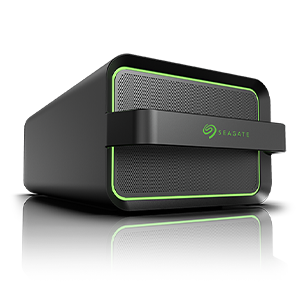As a characteristic of the underlying SSD technology, some external SSD drives may experience slower performance if large data sets (e.g., over 50 GB) are copied all at once. This occurs when the drive cache is filled with no pauses allowing the high-speed cache to clear.
If the drive gives short bursts of high-speed transfers and then slows down after a large transfer, then leave the drive connected to the computer and powered on to allow the high-speed write cache to automatically complete the “clean up”/optimisation process completely.
Keys items to know:
The drive cannot empty the cache when disconnected.
The drive cannot empty the cache while powered off.
The drive cannot empty the cache while the computer it is connected to is in sleep mode.
The drive must be idle for cache clean-up to occur.
The drive must have enough free space to move data. Once the drive is 90% full or more it may not be able to empty the cache and restore maximum write performance.
Emptying the cache may take an hour or more.
There is no concern for data loss, as this is part of any cache’s normal “clean-up” process
Read performance is not affected by full cache, so if read activity is also slow the problem is likely due to another reason see this article for other possible causes.
Resolution:
To clear the write cache and optimise write performance, leave the drive idle, connected to the computer, and keep the computer and drive awake for an hour or more.
Additional tips:
If the drive is connected to a laptop or system set to sleep then extra steps may need to be taken to allow the drive time to clear the write cache.
If the drive is connected while you work or play games from the internal drive, then the cache will have time to clear, and performance will be restored without any special action by the user.
If you want to clear the cache while away from the computer, then here are some ideas.
Leave the computer on the Setup screen.
For Windows – Power on the PC with the Expansion SSD connected to the USB port. Enter the BIOS or UEFI Setup screen generally available by pressing F10, F2 or Delete at startup. Leave this screen open, most systems will not go to sleep or power down while this screen is open.
For macOS – This option will not help since macOS still allows the computer to sleep while recovery setup is open.
Do not go into any of the menu options on this screen. Just allow the system to stay idle for a few hours. Once enough time has elapsed then restart the computer and allow it to start normally.
Temporarily disable sleep functions on the computer.
For Windows
Click the Start button
Type or choose Control Panel
Choose Hardware and Sound
Choose Power Options
- Choose Change Advanced Power settings
Note the current setting. Then change the setting to Never. Click Okay
Note the current setting under “Put the computer to sleep.” Change the setting to Never and press Save Changes.
After a few hours have passed then change “Put the computer to sleep” back to the previous time and go to Change advanced power settings and change “Turn off hard drive” back to the original setting and press Okay and Save Settings again.
For macOS
Plug into power if you are on a laptop.
Plug in the Seagate Expansion SSD drive
Open the Apple menu (Apple icon in the top right corner)
Choose System preferences
Choose Battery (also called Energy saver on older versions of macOS)
Note the time indicated under “Turn display off.”
Change the time to Never.
Click OK if there is a message box.
Let the system sit for a few hours.
Change the time back to the previous setting and close the Battery window.





